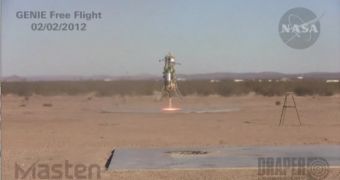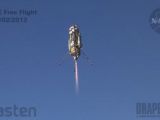Using a technology that could soon help us land spacecraft safely on other planets and their moons, a new suborbital rocket developed by Masten Space Systems managed to complete a series of difficult NASA landing tests earlier this month.
The vehicle, called Xombie, was able to launch successfully on February 2, rise to an altitude of about 50 meters (164 feet), and then move sideways by about the same distance. The real accomplishment was managing to land without relying on anything else but its thrusters.
NASA is developing this amazing partnership program with the private industry because it wants to accelerate the exploration of other worlds. At this point, the technologies required to do so are still in their infancy, and that needs to change as soon as possible.
One of the most interesting aspects of the Xombie flight is that it lasted only 67 seconds. The key to its success was that Guidance Embedded Navigator Integration Environment (GENIE) control system.
The Cambridge, Massachusetts-based Draper Laboratory was responsible for developing GENIE, using funds provided by the NASA Flight Opportunities Program. The team behind the system has great expectations for the future, saying that the range of applications for which it is suited is very wide.
“The Draper and Masten team has done a tremendous job pulling together this flight demonstration in a short amount of time. Draper was awarded this task in September 2011. This capability will allow the program to quickly demonstrate landing technologies for future space missions,” John Kelly explains.
He holds an appointment as the Flight Opportunities Program manager, at the NASA Dryden Flight Research Center, in Edwards, California. This is where the test flights were conducted, Space reports.
If the name Xombie rings a bell, it's because the vehicle is the winner of an $150,000 second prize in the NASA Lunar Lander Challenge. The competition, which concluded in October 2009, sought to spur innovation among private spaceflight companies, and to promote competition.
Masten has great plans for the future. In addition to demonstrating new takeoff and landing technologies, it also wants to start building spacecraft capable of reaching Earth's orbit. Whether this happens or not remains to be seen, but progress thus far looks promising.

 14 DAY TRIAL //
14 DAY TRIAL // 
